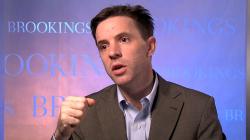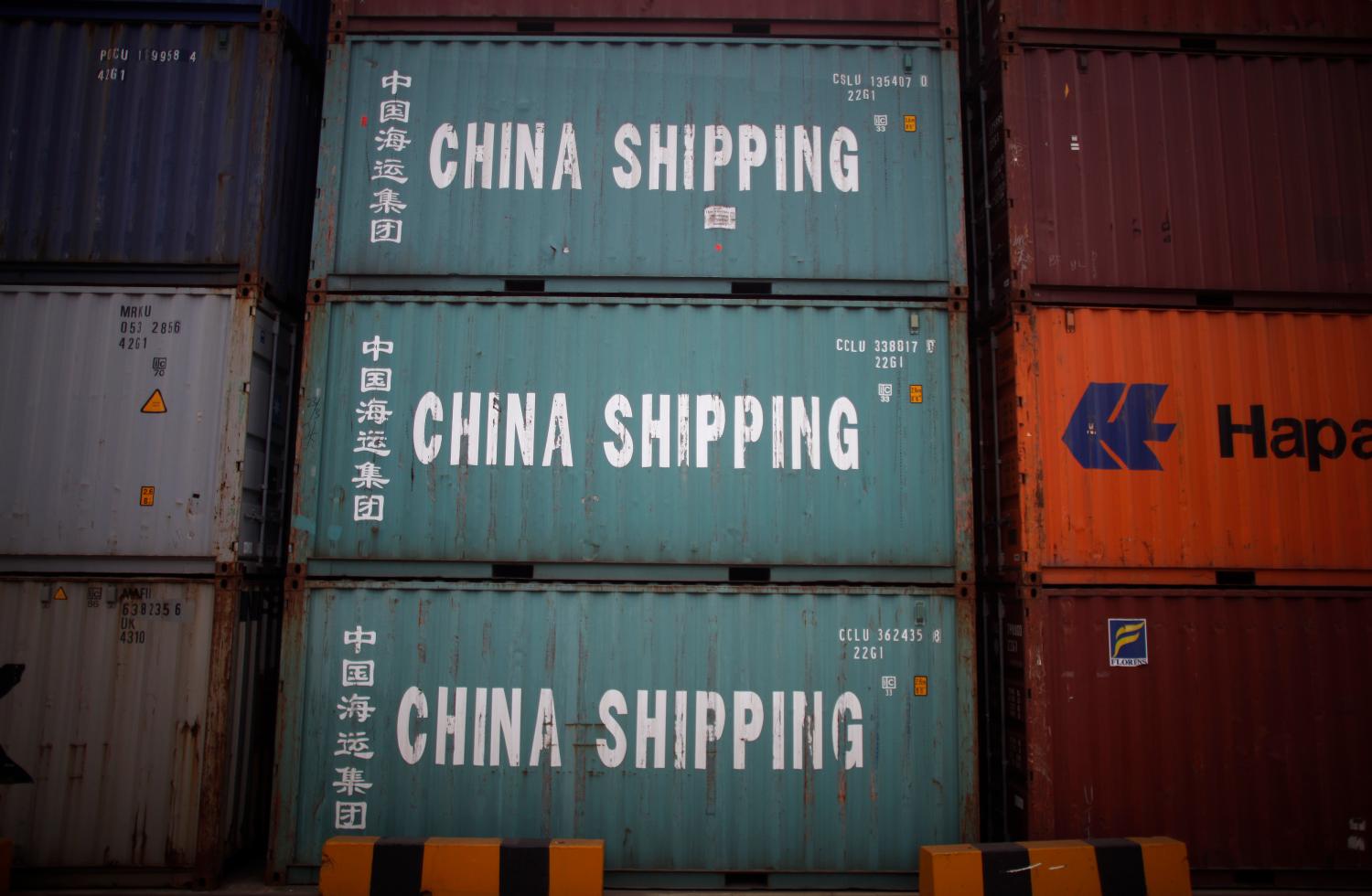Over the next four years, President Obama should advocate forcefully for ambitious free trade agreements with our partners in Asia and Europe. Mireya Solís and Justin Vaïsse wrote this memorandum to President Obama as part of Big Bets and Black Swans: A Presidential Briefing Book.
- Can President Obama overcome erosion of support for free trade agreements in Congress and among the American public?
- How will China react to the Trans-Pacific Partnership?
- What are the benefits of a new free trade agreement with the European Union?
Download Memorandum
(pdf) |
Download the Presidential Briefing Book
(pdf)
TO: President Obama
FROM: Mireya Solís and Justin Vaïsse
Pursuing and signing free trade agreements (FTAs) with both the Asia-Pacific region and Europe during your second administration will yield considerable economic and political benefits. World trade is expected to have stalled at a mere 2.5 percent growth in 2012, down from 13.8 percent in 2010. Protectionism is on the rise everywhere, especially in the form of non-tariff barriers. The Doha Round is essentially dead. At the same time, the United States and Europe need to stimulate their economies without resorting to fiscal spending. Furthermore, the United States needs to establish a broader and deeper economic presence in Asia, the world’s most dynamic economic region. Achieving both a Trans-Pacific Partnership (TPP) and a Trans-Atlantic Free Trade Agreement (TAFTA) is the most realistic way to reclaim U.S. economic leadership and make progress towards your promised goal of doubling U.S. exports. Moreover, signing both the TPP and TAFTA would have deep strategic implications. Both deals would reaffirm liberal norms and a leading U.S. role in setting the global rules of the road. The TPP would help define the standard for economic integration in Asia, without necessarily antagonizing China. TAFTA would give American and European businesses an edge in setting industrial standards for tomorrow’s global economy.
Recommendation:
• Pursue both TPP and TAFTA simultaneously. Conclude negotiations in close succession to gain momentum in international bargaining, reap the benefits of emulation (through setting rules and standards of global applicability), and increase your leverage domestically;
• Start the process to secure Trade Promotion Authority (TPA) early in 2013 by reaching out to Congressional leaders in unison with an aggressive public awareness campaign on the benefits of free trade, led by the White House, which seeks to allay some of the concerns about opening U.S. markets.
• Set October 2013, the time of the next APEC leaders’ meeting in Bali, Indonesia, for the conclusion of negotiations. This will provide a focal point for leaders of TPP countries to bridge differences at the negotiating table;
• Launch TAFTA talks as early as possible in 2013 after the U.S.-EU high-level working group makes it recommendations, with the objective of concluding negotiations before the next U.S. midterm elections in 2014.
Background:
Free trade was not a priority in your first administration. It is, however, an indispensable component of a long-term growth strategy to rebound from the 2008-2012 recession. It is also a necessary part of the response to the significant redistribution of power in the international system. The pivot to Asia and to the emerging world in general cannot be based on political and military initiatives alone. It needs to be backed by rejuvenated American leadership in trade and investment.
While the time has come to launch new initiatives in these spheres, the erosion of support for FTAs in Congress and among the public is likely to hamper this effort. Contrast, for example, the fact that Congress continuously renewed fast-track authority between 1975 and 1994, but in the post-NAFTA years it was only extended during the 2002-2007 period. Public skepticism of the value of FTAs is also on the rise, according to polls. It will fall on you, Mr. President, to advocate forcefully for these ambitious agreements.
TPP
The TPP is the most ambitious trade initiative currently under negotiation. In essence, it promises to do what no other FTA has done before: to liberalize without exemptions and to tackle systematically vexing non-tariff barriers by generating trade disciplines in areas such as intellectual property, regulatory convergence, and state-owned enterprises. With the TPP, your administration can shape an Asia-Pacific economic integration platform with the potential to generate substantial economic and political payoffs. According to reliable estimates, a TPP 13 (one that includes Japan and South Korea) would generate annual income gains for the United States in the neighborhood of $78 billion dollars. Furthermore, an expansive TPP can also achieve the important political benefit of disseminating highquality trade and investment rules through a ratcheting-up effect. Other trade initiatives will then feel compelled to raise their standards to remain competitive (e.g. ASEAN’s Regional Economic Partnership) and more countries will seek TPP membership, perhaps even China in the future. Indeed, you should explain to your Chinese counterparts that this is by no means the economic equivalent of a containment strategy; it is rather an enticement strategy that recognizes the benefits of a strong Chinese economy in an interdependent world, and aims to codify best practices on international trade and investment rules that could help China deepen its market reforms.
TAFTA
TAFTA is equally ambitious. If achieved, it would offer the United States and the European Union a new opportunity to define the industrial standards and norms of tomorrow’s economy, especially vis-à-vis the Asian giants, rather than competing against one another. EU leaders seem very eager to move forward. American labor and environmental activists will have fewer objections to a deal with Europe than with other regions, given the generally higher standards prevalent there. Tariffs between the two sides of the Atlantic are already low (around 2-3 percent on average), but the scale of the potential payoff makes an investment in this initiative worthwhile. The volume of trade and investment between the United States and Europe is huge – much larger than that with China. The benefits of an agreement for both sides would be substantial if common standards and norms can be adopted and regulations harmonized in crucial sectors like pharmaceuticals, electric cars and cloud computing. Sweden’s National Board of Trade predicts that trade of goods and services between the United States and the European Union could jump 20 percent, or more than $200 billion annually, and the American Chamber of Commerce estimates that growth on both sides of the Atlantic could be boosted by 1.5 percent annually.
There are potential obstacles and pitfalls:
• Negotiation failure: TPP nations have not yet overcome differences in important areas of the market access negotiations (e.g. sugar, dairy, textiles) and in the rule codification effort (e.g. intellectual property and the state-investor dispute settlement). In the case of TAFTA, major problems will arise on the EU side concerning agricultural and food standards(e.g. Europe’s ban on genetically-modified organisms or the use of artificial growth hormones in beef production). On the U.S. side, there might be problems involving access to public markets by EU firms because American states have legislative authority on this issue and often have “buy American” rules.
• Ratification failure: The lack of TPA, the divisive public debate on the benefits of free trade, and the unprecedented scope of these trade agreements augur at best an arduous ratification fight.
• Parochialism: There is a danger that negotiations on each FTA will yield idiosyncratic rules that fail to generate global standards, and instead compartmentalize the world economy.
• Polarization: Depending on the geopolitical climate, there is the risk that the TPP could antagonize China and polarize the Asia-Pacific region further rather than promote its integration.
Conclusion:
The benefits of these two FTAs make the effort required to secure them worthwhile. Your administration can avoid potential pitfalls with creative solutions and political investments. You should shore up U.S. negotiating credibility by securing TPA, strike the right balance between ambition and flexibility at the negotiating table, advocate global rules and norms, and reassure China of the benefits of a deeper economic relationship based on higher trade and investment standards.
The Brookings Institution is committed to quality, independence, and impact.
We are supported by a diverse array of funders. In line with our values and policies, each Brookings publication represents the sole views of its author(s).





